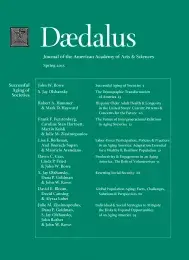Resetting Social Security
Social Security retirement benefits were first introduced in 1935 as a financial safety net for a large and rapidly growing older American population. The program was intended to be economically self-sustaining, but population aging and rising life expectancies threaten the program’s solvency. The 1983 Social Security Amendments mandated that the full retirement age increase to 67 by the year 2027. In this essay, we present evidence demonstrating that the rate of improvement in life extension at older ages accelerated after 1983. If the 1935 ratio of working years to retired years is maintained, early and full retirement ages of 66.5 and 69.4, respectively, were justified in 2009. Additional delays in the age of eligibility beyond those currently in effect would place significant financial burdens on individuals with lower life expectancies, the poor and near-poor, and the very old, and – absent additional reform – would exacerbate existing unequal access to entitlements within the system.
In the future when there are a great many persons over 65, most of the able-bodied individuals will and should continue working to age 70 or 75 if their services seem needed.
–Robert J. Myers, Chief Actuary (1947–1970) and Deputy Commissioner (1981–1982) of the Social Security Administration (SSA) and leader of the National Commission on Social Security Reform (1982–1983)1
Has the time arrived to reset the age of eligibility for Social Security retirement benefits? When President Roosevelt signed the Social Security Act (SSA) in 1935 in the wake of the Great Depression, unemployment was 34 percent, savings accounts were decimated, and almost 50 percent of the older population was dependent on family and friends for financial support. There was reason to believe large segments of the population–particularly the elderly– were facing destitution.2
To address this concern, the Committee on Economic Security was established by executive order in 1934. What we know today as Social Security began simply as a federally administered social insurance retirement program for older people, nominally financed through payroll taxes and paid for by workers and their employers. As the program was originally structured by the Social Security Act of 1935, people would earn benefits as they continued to work. If death occurred before age sixty-five, or before they received what they paid into the system even after retirement, their estate would receive the difference plus interest in the form of a one-time lump-sum payment. At the program’s inception, no benefits were provided to spouses or children. . . .
Access the full volume here.
